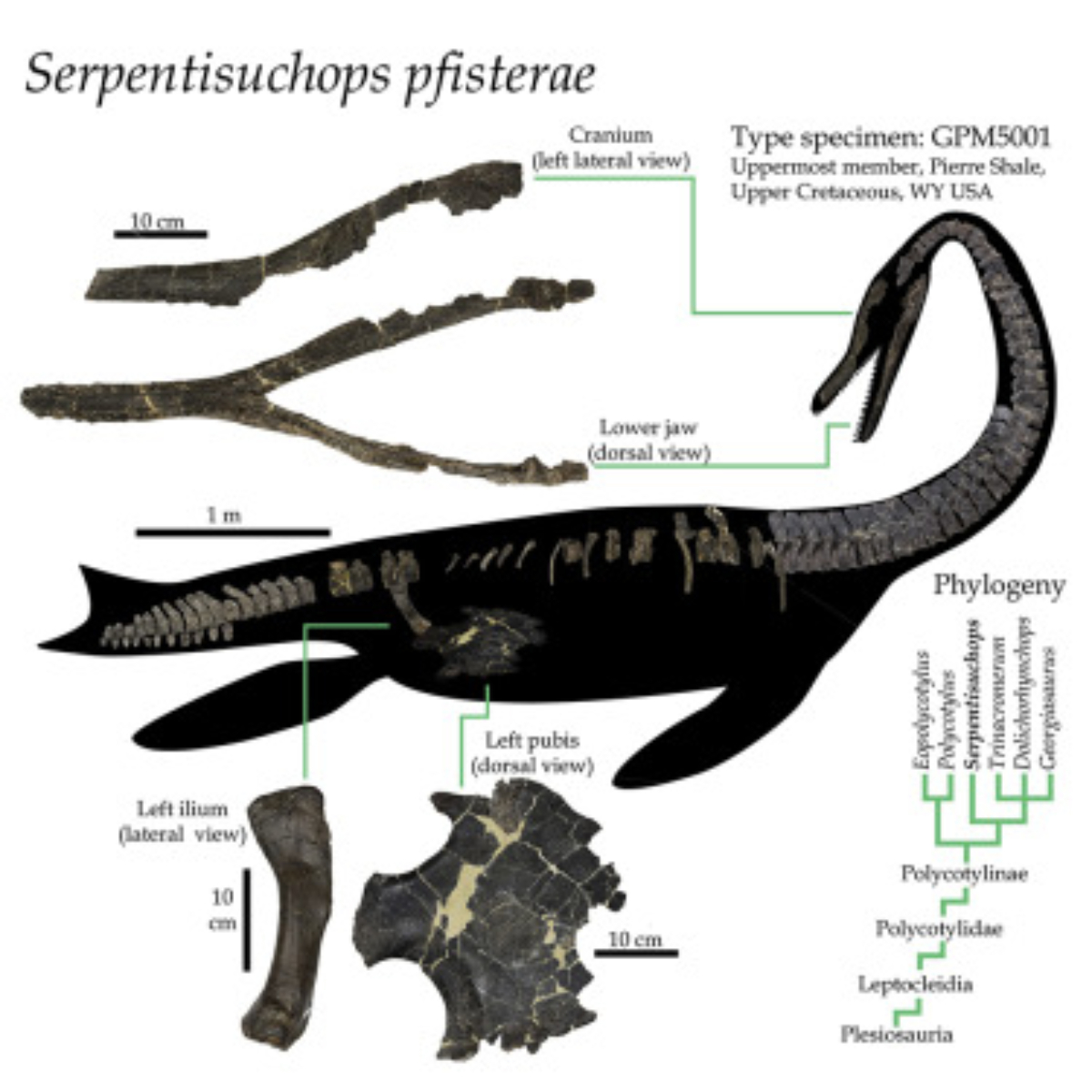There are few predators more frightening than snakes and crocodiles … but what about a snake-crocodile combo? Although it might sound like a cheesy monster movie premise, “snakey crocodile-faces” were actually real reptiles that once swam Earth’s seas.
Scientists discovered evidence of what they’ve now named Serpentisuchops — which literally translates to “snakey crocodile-face” — in eastern Wyoming 25 years ago. The specimen is believed to be around 70 million years old, meaning this reptile lived during the late Cretaceous period. Archaeologists found a lower jaw, a partial skull and part of the reptile’s vertebral column. They also found several fossilized teeth from the creature nearby.
The fossil was well preserved in the sulphuric badlands of Wyoming, and the specimen was quickly sent to the Paleon Museum in Glenrock, Wyoming, to be studied. However, it took 25 years for scientists to finish their study of this fossil, and the results were published in the journal Cell’s iScience in September.
Artist Nathan Rogers created illustrations for the research paper, including this rendering of Serpentisuchops. “A new genus and species!” he wrote.

The new genus and species were a surprise to researchers: Serpentisuchops, which belongs to an order of reptiles called plesiosaurs, is defying what paleontologists thought they knew about the marine reptiles.
“When I was a student I was taught that all late-evolving plesiosaurs fall into one of two anatomical categories,” says researcher Scott Persons, a geology professor at the College of Charleston in South Carolina, in a press release. “Those with really long necks and tiny heads, and those with short necks and really long jaws. Well, our new animal totally confounds those categories.”
Unlike what paleontologists previously believed about the plesiosaurs species, this fossil gives us a startling example of a plesiosaurs with a long, serpentine neck combined with powerful, elongated jaws. And, at over 7 meters tall, the aptly-named Serpentisuchops no doubt would have struck a terrifying figure swimming in the sea towards its prey. Researchers say that this long, snake-like neck combined with powerful jaws helped this reptile to make swift, lateral attacks on its prey.

“The articulation joints between the basal neck vertebrae grant a lot of lateral flexibility,” Persons explained in the press release. “You combine that with broad vertebral attachment surfaces for powerful neck muscles, and you have an animal that can rapidly swing its neck side-to-side. The elongate and narrow jaws extended the animal’s reach that much farther and could be swished through the water with a minimum of drag. What I think we have here is a fast, effective, sideways-striking fish snapper.”
The impressive Serpentisuchops made a fearsome predator in its day, but now we can use its fossil to learn even more about what life was like millions of years ago.
This story originally appeared on Simplemost. Checkout Simplemost for additional stories.


